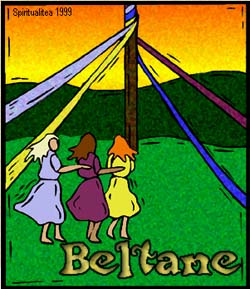Our Christian friends are often quite surprised at how enthusiastically we Pagans
celebrate the ‘Christmas’ season. Even though we prefer to use
the word ‘Yule’, and our celebrations may peak a few days
before the 25th, we nonetheless follow many of the traditional
customs of the season: decorated trees, carolling, presents,
Yule logs, and mistletoe. We might even go so far as putting
up a ‘Nativity set’, though for us the three central characters
are likely to be interpreted as Mother Nature, Father Time, and
the Baby Sun-God. None of this will come as a surprise to
anyone who knows the true history of the holiday, of course.

 Now
Now